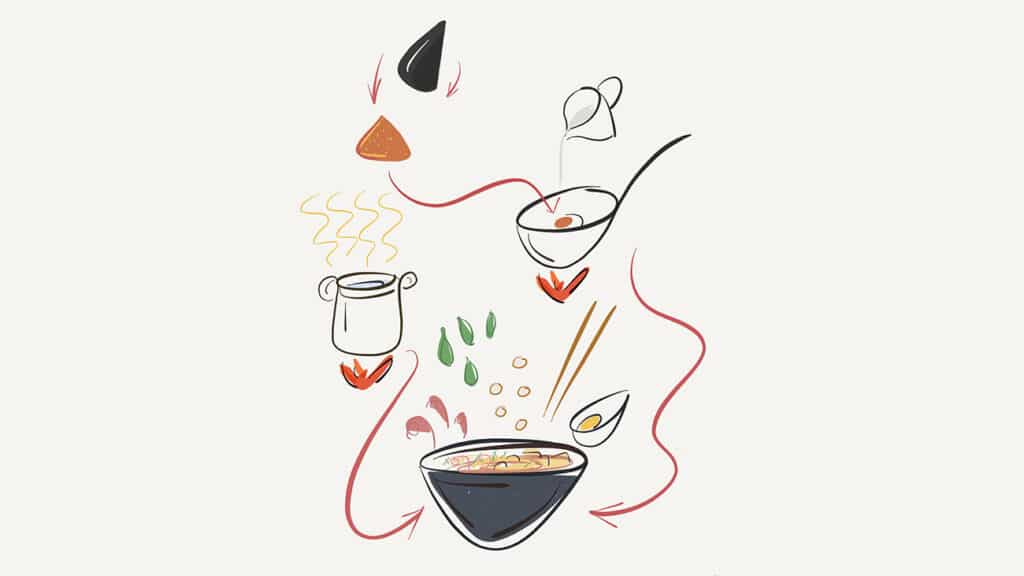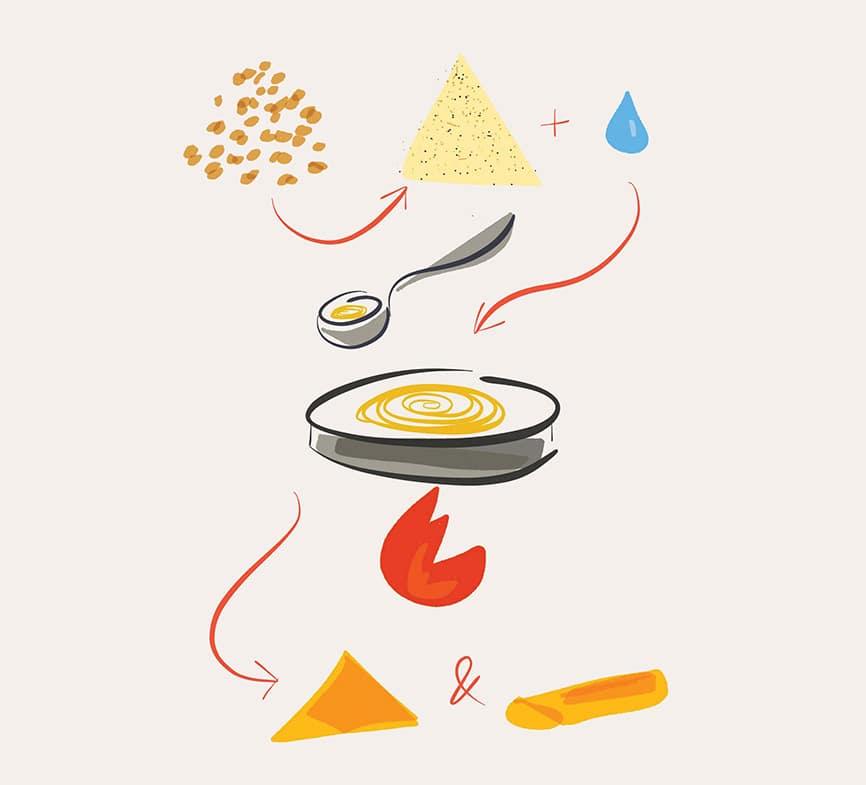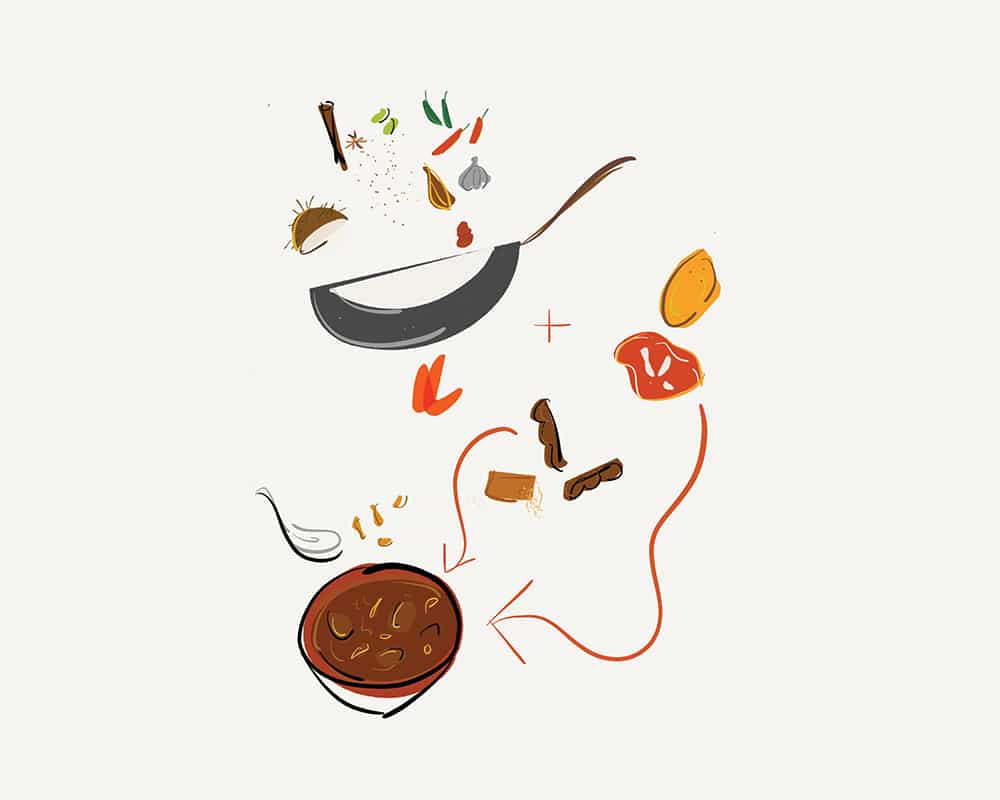A dish dissected: laksa
With help from Salina Campbell of Joli, Sue Quinn breaks down the making of a southeast Asian staple


“THE DISH IS CLAIMED BY MALAYSIA AND SINGAPORE AND SLURPED FROM THAILAND TO INDONESIA AND BEYOND”
Illustration: Ed Smith
The origin of laksa is a bit slippery to pin down, just like the noodles that nourish this fragrant southeast Asian soup. Some etymologists believe the word laksa originates from an ancient Persian word for noodles, ‘laksha’ – a remnant of the centuries old trade links between the Middle East and islands of the Pacific. But the dish is claimed by Malaysia and Singapore as their own and slurped from Thailand to Indonesia and beyond. Variations are abundant, but united in a single common purpose: to fill the belly and comfort the soul.
A bowl of laksa comes brimming with treasures. Noodles intertwine with poultry, vegetables, seafood and/or eggs in an aromatic broth. Ingredients and seasonings vary, thanks to the Peranakan people, descendants of early Chinese migrants, who settled throughout the Malay archipelago and inscribed onto the dish the regional signatures of their new homelands.
On the island of Penang, for example, asam laksa resonates with sour Thai flavours like tamarind, while in Singapore the dish is sweet and rich with coconut milk and salty with dried shrimp. In Johor, meanwhile, laksa is more akin to curry.
This diversity offers a pleasing latitude to chefs. “I don’t ever use the word authentic; I just say it’s my family recipe,” explains Salina Campbell, founder of Borough Market’s Joli food stall, which serves up hundreds of bowls of vibrant Singapore laksa each week. Salina says fresh ingredients – not dried – are key. “We use fresh turmeric, fresh galangal, and fresh baby shallots – so much more expensive than dried, but worth it – which I cook from fresh. I also grind the chillies myself,” she says. “I use my great-grandmother’s recipe. She was a food trader at one of the first food markets in Penang.”
The secret to the vibrant flavour of Salina’s laksa? She attributes it in part to cooking her paste – made with shallots, galangal, lemon grass, tamarind, dried shrimp, star anise, mint, pandan leaves, chilli, candlenuts (for nutty richness) and olive oil (for health, she says) – in a clay pot. “The flavour is better than cooking it in a metal pan.” No surprise that laksa is among the richest, most delicious and comforting of all the bowl foods.
Paste
The all-important paste defines the flavour of laksa. A heady amalgam of dried spices, fresh herbs and other aromatics (which vary according to the region and style of laksa being prepared) are pounded to a paste, traditionally with a pestle and mortar.
Soup or gravy
This is made by frying off the paste (essential to avoid the taste of raw spices in the finished dish) and adding liquid – coconut milk and/or chicken or seafood broth. In some regions, pieces of chicken are cooked in the soup itself.
Noodles
These are cooked separately and added when the laksa is assembled: thick rice ribbons, delicate vermicelli, wheaten spaghetti or, if you’re lucky, more than one variety.
Add-ons
Appropriate additions are deliciously varied. Prawns, tofu and laksa leaves are commonly included. Other morsels added to the bowl might comprise boiled eggs, shrimp balls, fish cakes, cuttlefish, black pudding, mackerel and mint, topped off with a sprinkling of fried shallots.

